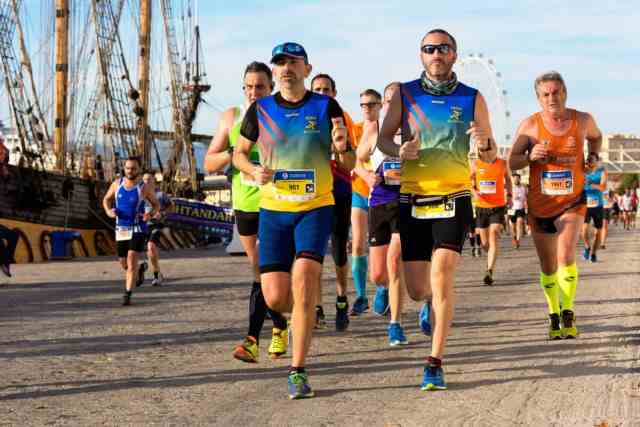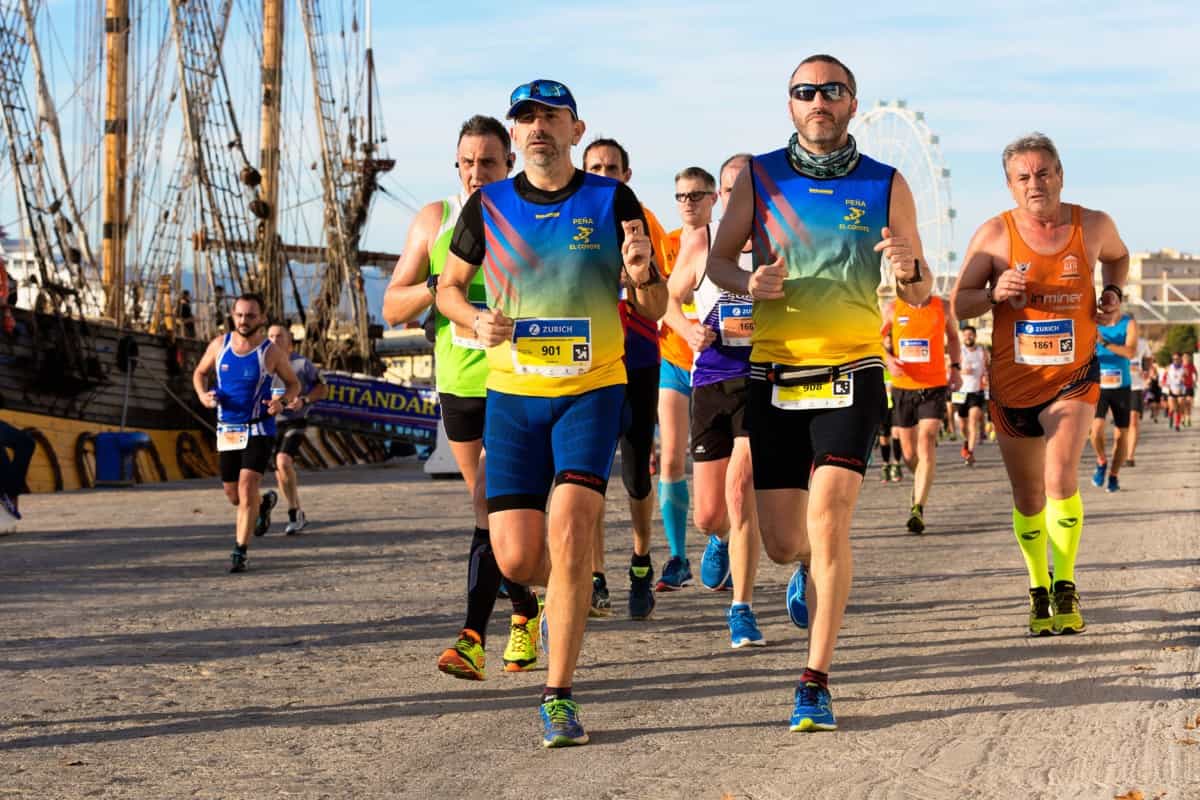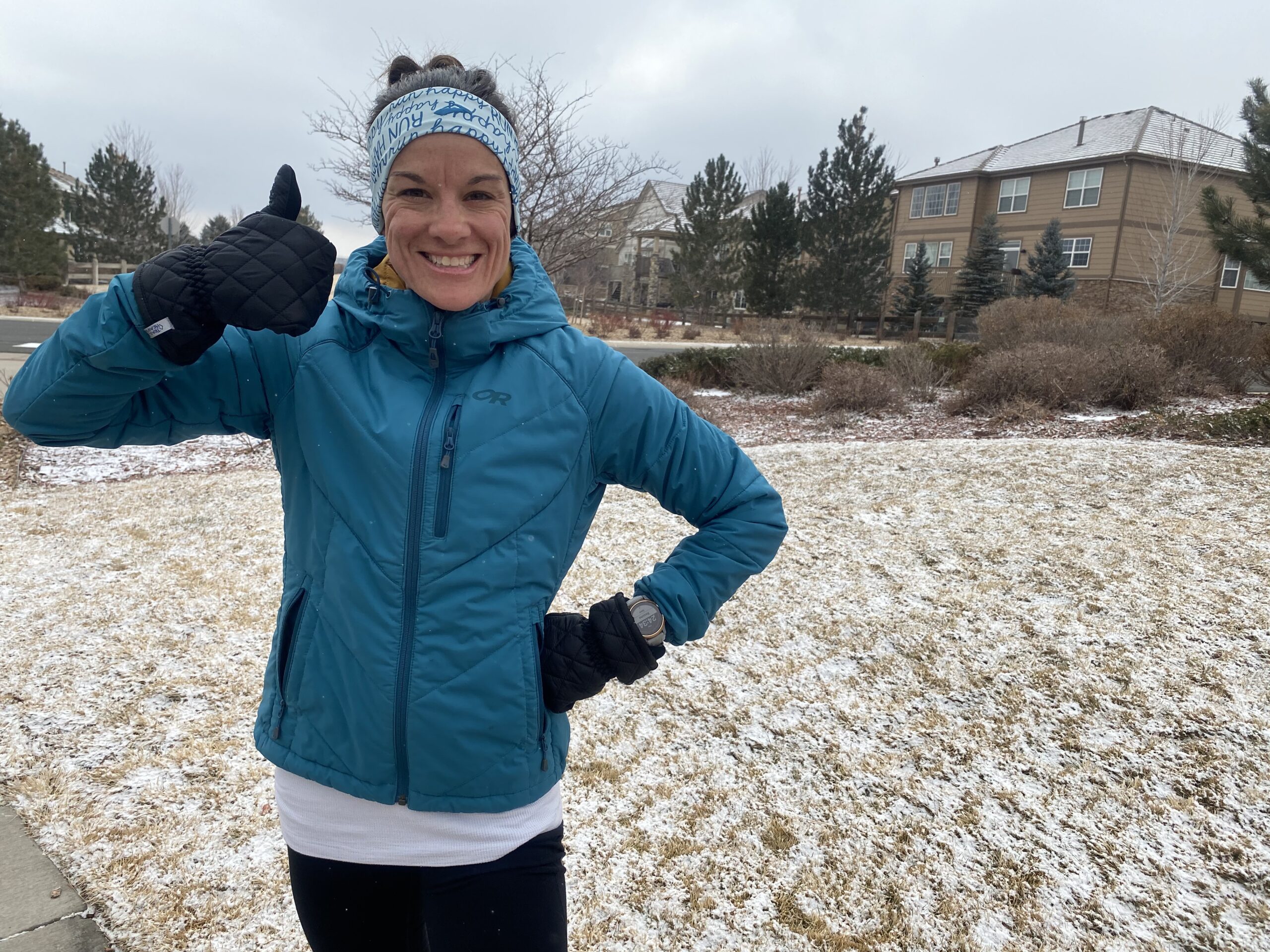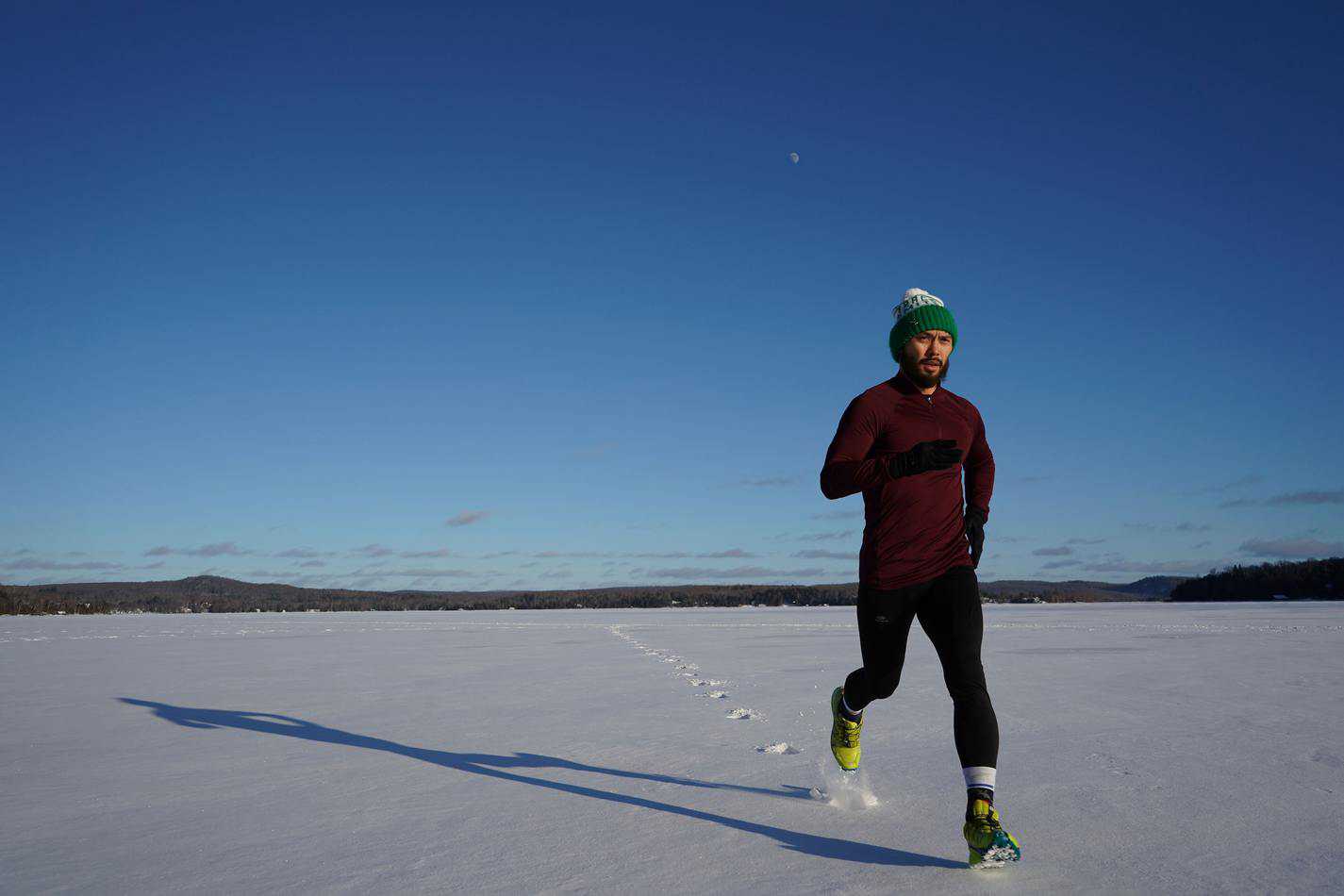Although I’ve heard the term “masters” before, I’d never really put much thought into it. That is until I posted on my podcast training group that I had just completed my last run of my 30s and someone responded with, “Welcome to the Master’s Club!” Huh. It definitely sounds cooler than it is…really it just means I’m getting old. But then I reframed my thinking and thought, “Hell yeah!” I would’ve never envisioned I’d be running marathons at age 40, and the runners in my group who are older than me inspire me to keep striving for more as I age. That’s not to say that runners don’t face certain challenges in marathon training in their 40s, 50s, 60s and on up. But it certainly doesn’t mean your running career needs to end either.
With the right kind of training, even the “masters” can achieve success in the marathon.
What does it mean to be a “masters” runner?
The day you turn 40, you become a masters runner (that’s assuming that you run, anyway.) This term can be confusing because “masters swimming” refers to anyone over the age of 18, and the most famous golf tournament, “The Masters” refers to the only those who are the very best.
In any case, a little explanation about “masters running” felt necessary.
It began as a way for older runners to not have to be in direct competition with the younger set of runners. Nowadays, most races have age group awards anyway, split up into increments of 5 or 10 years. That way, everyone’s competing with others who are close in age.
So fellow masters runner, let’s talk about how you’ll want to go about marathon training as you age to do your best while staying healthy.
We’re Not Getting Any Younger
Age is just a number, people say. And I personally love this mentality. Setting limits on ourselves just because we’ve been around for a specific number of years would be a disservice.
An example of this is finding out your “adjusted age.” This is based on factors such as resting heart rate and weight. Chances are if you run regularly, your adjusted age will reveal that your body is operating at a much younger age than you actually are. This fitness calculator will tell you where you stand. (There’s a lot of research involved…it’s not just one of those silly online quizzes you take to pass the time.)
Based on my results, it said that my fitness was in line with an average 20-year-old’s. And I guarantee I am in much better overall health than I was back then. So I feel good about that and where I am headed as I age. Chances are you’re right there with me.
But is age really just a number? As much as we’d love to believe that we’ve found the fountain of youth, the body won’t continue to perform like it always has (even if your heart is in tip top condition).
In other words, without a doubt you should keep running for as long as you can and striving to be your best. But you’ll also have to come to the realization that soon your fastest years will be behind you if they aren’t already. What matters more is that you’re not waiting to do the right things for your body in the present to maximize your future potential (and just overall well being!)
Your Runner’s Body is a Temple…
Being new to the masters running community is making me think a whole lot more about how I envision myself as a runner through the coming decades. Which honestly didn’t really cross my mind much before. Like a lot of people in this age group, not just runners, I think we have a little bit of a come to Jesus moment about our health and what we can do to make sure we stay healthy for as long as possible.
According to livestrong.com:
after the age of 35, you lose 1 percent bone mass each year. They go onto say that by the age of 70, “you will have naturally lost 40 percent of your muscle mass and 30 percent of your strength” without any focused strength training along the way.
If this is making you realize how important strength training is, it should!
You’re likely already running, and in that regard you’re already far ahead of the population in terms of fighting off disease by keeping up on regular physical activity.
Dosomething.org cites the following fact from the Centers for Disease Control and Prevention:
4 in 5 older adults will battle at least one chronic condition or illness such as heart disorders, arthritis, or osteoporosis. 50% will battle at least two.
It would be hard for me to predict at 40 if I’ll still be able to run a marathon in my 60s. Most people don’t. And honestly I might not even want to. Who knows. What I do know is that what I do RIGHT NOW and continuously as I age in terms of fitness and nutrition has a direct effect on my health as an older adult.
Treating your body as a temple is one of the best things you can do to continue your running journey, and more importantly, prevent injuries and ward off illness and disease.
I would suggest starting with a trip to your doctor to find out just where you stand in terms of your health. Chances are you have a pretty good idea, but ensuring you’re healthy enough to train for a marathon and seeing if you have areas of opportunities with your health is the right place to start.

Training for a Marathon in Your 40s
Many runners are just hitting their stride (see what I did there?) in midlife. With a focus on health and the right training, it could even be your best running decade yet.
Did you know…
- the average male finisher of a marathon is 40 years old?
- that the largest percent of men who are running marathons comes from the 40 – 49 age group?
- for women, 26.6% of female marathoners come from the 40 – 49 age group?
You can find all kinds of great stats like this at Marastats.com, including how you stack up against other runners in your gender age group.
Even though runners join the “masters” category beginning at age 40, there’s still a lot more to give to your marathon game through the next 10 years.
Your training won’t really look that much different than it probably did in your 30s. But mid-life does bring about more noticeable symptoms of aging that you’ll have to contend with. Here’s what you may expect through this decade:
What Aging Looks Like in Your 40s
Sleep: According to Best Life, it was found that middle-aged adults slept an average of 23 minutes less than those in their younger adult years. Sleep becomes less restorative for many, even if getting the same amount. Better health equates to better sleep; better sleep equates to better health.
Menopause: For women, this is the age at which most women will go through perimenopause – a years long time period that occurs before menopause (or the complete cessation of your period). As your hormones shift, Symptoms can include missed periods, hot flashes, weight gain, poor sleep, and moodiness. All of these can affect how you perform and feel while you run. But one of the biggest changes that occurs is the loss of estrogen which effects bone health.
Higher Risk of Disease: In middle age, it’s time to start making doctors’ appointments a priority if you haven’t already. Beginning at age 40, people start becoming more susceptible to certain diseases so regular check ups are important. Annual physicals are important in order to work with your doctor in how best to prevent the onset of debilitation conditions as well as catch anything early that may arise.
Injuries and Recovery: According to Prevention, “exercise-related injuries are more common after age 40.” And year by year, your ability to bounce back from injury takes longer. Cell exhaustion, hormonal changes, and musculoskeletal system deterioration are all to blame. A higher risk of injury with extended periods of recovering back to your healthy self are two important elements that runners need to be aware of as they age.
Not to sound like a broken record, but the better you take of yourself the less noticeable these deteriorating effects will be. But taking into account what aging adversity you might begin to face, let’s talk about how that might affect your marathon training.
How to Train for a Marathon in Your 40s
It’s important to be cognizant of the factors that affect your health at this age. And by now, going to doctors’ appointments needs to be in your yearly rotation at a minimum.
With that said, marathon training in your 40s can continue on like it always has for most runners.
The most effective marathon training techniques such as: running the majority of your miles at an easy pace,
placing a high importance on recovery, and building mileage gradually continue to apply.
If you’ve skimped on these recommendations in the past, now is the time to start training in the most healthy way possible by actually doing them.
Other tips for marathon training in your 40s include:
- Prioritizing sleep – this is one of the single best ways to maximize your marathon training. It’s true for anyone, but becomes even more important as you age. Check out this article to find out why: “How Sleep Can Give You the Edge You Need in Marathon Training.”
- Strengthening bones – this is especially true for women going through the stages of menopause. Running already helps with this, but resistance strength training is necessary, too. Be sure you’re getting plenty of vitamin D (10 – 15 minutes per day without sunscreen is sufficient) and calcium.
Here are a few of my favorite recovery and at home strengthening tools:
- Rotating shoes and running surfaces – with slowly deteriorating muscles, bones, and joints, having quality shoes that can absorb more impact is key to allowing your legs to keep on moving. It’s also recommended to rotate through different kinds of shoes during your training so as not to place repetitive stress in one particular area of the body. Utilizing different running surfaces helps with this, too – I thorougly go over the 8 types of running surfaces in this article.
- Including threshold and speed workouts – Over at Mcmillan Running they’ve outline key tips for masters runners, and they discuss the importance of including workouts that build your Vo2 max and give your fast-twitch muscles the extra work they need to stay fast. Doing lactate threshold runs (around half marathon race pace) and strides (see video below for how to do these) will help with this.
- Eating well – Keeping nutritional balance in your diet and maintaining your weight are paramount for continuing with the amount of mileage marathon training requires.

Training for a Marathon in Your 50s, 60s and Beyond
The physical demands placed on the human body from marathon training in these decades are far greater than for someone in their 40s. While a good chunk of the marathon running community is made up of runners in their 50s, the truth is that there aren’t a lot of people running marathons in their 60s. You can probably guess why this decline happens, but why is that?

What Aging Looks Like in Your 50s and 60s
Bone Health: The great part here is that if you’ve led an active lifestyle up this point, you’re still working with a body that has strong bones and muscles and cooperative joints. It gets trickier when you’ve been sedentary for a long time and are picking up running again or for the first time. It’s best to continue to manage your weight, strength-train and check with your doctor about dosages you may need in terms of vitamin D and calcium.
Metabolism: As you age, your metabolism does slow. But that’s not an excuse to pack on the pounds. Perhaps just a reminder of how important exercising and eating the right foods continues to be. Hopefully you’ve been doing this all along, but don’t fret if you haven’t. You’ll reap the benefits of changing your habits no matter when you start.
Heart Health: According to the AARP, “An older heart can pump about the same volume of blood with each beat as a younger one can.” That’s great news! It’s true that the incidence of heart disease rises drastically through the decades, but inactivity and poor diet are to blame. Eating right and continuing to run are the best thing you can do to keep a strong heart.
Immune System: As you age, so does your immune system. This is called immune senescence. What this means is that your body doesn’t continue to be as successful at fighting off infections and diseases that it once could have. (That’s why it’s recommended that the 65 and up set get a stronger dose of the flu vaccine.)
The best defense of prolonging debilitation in each of these areas all comes back to living an active lifestyle and eating well. But you’re certainly working against more risks than you ever have before. That’s going to make marathon training more difficult for many, but you’ve done hard things before. With the go ahead from your doctor, I say go for it!
Healthy 50, 60, 70 year-olds CAN run marathons with the right training.
How to Train for a Marathon in your 50s and 60s
Don’t let a number deter you from running a marathon. If you’ve been running, and are the epitome of health, what’s stopping you? Yes, you will probably notice more aches or pains than you’ve had in the past, but that means you’ll need to make sure to optimize recovery.

Here are some things you’ll want to consider as part of a marathon training program in your 50s and 60s (on top of what was mentioned for 40s runners):
- Listen to your body – If you need a day off, then take a day off. No need to be the hero here. However tightness from a hard workout could mean you need the opposite of a day off by just getting your legs moving with a very easy paced recovery run. Illness, overwhelming fatigue, or exhaustion, however, all point to letting yourself completely rest until you feel back to yourself.
- Always put a recovery day between a hard day – This is really the best advice for a runner of any age. But now more than ever, if you don’t do this, you will likely find yourself injured. I go over exactly how to do this in my article: “The Importance of Recovery Runs in Marathon Training.”
- Don’t focus so much on a time goal – This can be tough to swallow. But goal-setting at this age doesn’t need to necessarily be about hitting a specific time. Finishing a marathon feeling good, or running the entire way (if that’s something you can handle are great goals), or learning how to push past mental barriers are great goals, too!
- Allow walk breaks – Just because you’re in your 50s and 60s doesn’t mean you can’t still run 26.2 miles continuously. But for some people, being able to continue with the distance may mean they need to include some walk breaks to recover more easily. There’s absolutely nothing wrong with this!
- Start Training Early – Being older means you’ll have to pay even more careful attention to building mileage very slowly. For most runners it’s recommended to not ever increase mileage by more than 10% per week; at age 50 and up, you’ll want to consider going more slowly than that. What that means is that you’ll need to start training earlier to reach your potential – 20 weeks or more is best.
- Get a Coach – You’ll want to look for a coach who specializes in working with older runners. Finding a coach who understands the demands put on an aging body will help you be able to run your best.

Check out Jeff Galloway's Book: Running Until You're 100 for tips from a pro who, at the age of 60, reports no injuries in 27 years.
Focusing on Running Wins Beyond PRs
Something my running coach said the other day really resonated with me. It was about finding the joy in the descent after you’ve reached the peak. Having just turned 40, and as someone who’s run for quite a long time, I don’t really know how many PRs I have left in me. I’m training harder than I ever have before, so maybe a few, but it can’t last forever.
We are human, and aging is real. As a very competitive person, it’s hard to think about a future of running that doesn’t demonstrate any improvement on paper. But that doesn’t mean improvement won’t happen in other ways.
More than anything, I want to build a lasting relationship with running that can take me well into my 60s and beyond. There is nothing more inspirational to me than seeing older people out there killin’ it alongside their younger counterparts (like Barbara Gufferman who trained for the NYC Marathon at age 60)! But the only way that’s going to happen is if I allow the joy I feel from running to take precedence over best times.
I’m still very competitive with myself at this point, but I am also learning to focus on wins beyond PRs. Some of these include:
- doing more trail running instead of only sticking to the roads
- relishing in the easy days…something I NEVER used to do
- chatting away the miles with a friend which keeps the mind and body healthy simultaneously
- being an example for my children of how to lead a healthy and active lifestyle
- accomplishing more than I would’ve ever thought possible – getting older doesn’t mean those goals go away, they just look different
Soon, my fastest races will be behind me and perhaps yours already are. We’ve spent our lifetimes reaching for those top finishes; but we can still give it our all for where we’re at on the way back down.
*Always check with your doctor before starting any new activity or training program.
*As an Amazon Affiliate, I earn a commission from qualifying purchases







